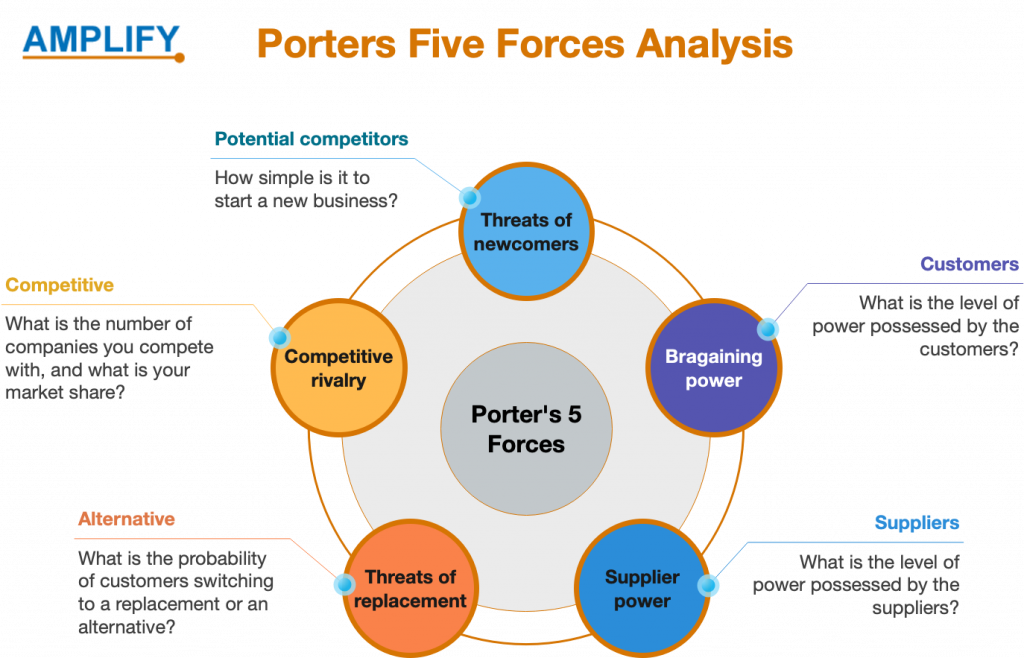How do you determine the market potential of your startup?

Comprehend the competitive landscape and its impact on business success. Porter’s Five Forces analyze industry attractiveness and strategic positioning, especially for start-ups. Determine competitiveness and profitability by considering the competition, new entrants, substitutes, and consumer and supplier power. Variables like differentiation, innovation, capital needs, regulations, customer preferences, and substitutes influence these forces. Apply Porter’s model across sectors to assess the competition and enhance long-term profitability. Named after Michael E. Porter, Harvard Business School professor.
Application of Porter’s five forces:
To effectively use Porter’s Five Forces framework to look over your market, please follow the steps below. Start by defining your industry and target market to understand your offerings, value proposition, and target customers. Next, identify the relevant forces and their underlying drivers. It is essential to assess each party’s intensity, which can be accomplished using a scale ranging from low to high or assigning a score based on your analysis. Creating a five-forces diagram can help synthesize your findings.

Once you have assessed the forces, the final step is to interpret the results and formulate a strategy. Utilize the outcomes to identify opportunities, threats, strengths, and vulnerabilities. Then, develop strategic options and actions to enhance your competitive advantage and create customer value. This step is critical, as it ensures that your business is well-positioned to compete effectively in the market.
Discover the Pros and Cons of Porter’s Five Forces Framework
Porter’s five forces framework provides several advantages, such as a comprehensive analysis of the industry’s competitive landscape, strategic insights into the company’s market positioning, the ability to predict changes in the industry environment, and the identification of opportunities for establishing a sustainable competitive advantage.

However, the framework has limitations, such as a limited scope that concentrates solely on external factors and disregards internal factors that can impact a company’s performance. It insinuates a static industry structure, ignores the possibility of collaboration between companies within an industry, and relies on a defined industry, which can be challenging to determine for some businesses.
The framework should be used with other strategic frameworks and tools to obtain a more comprehensive understanding of a company’s competitive landscape.




















